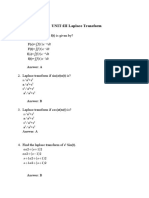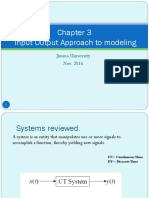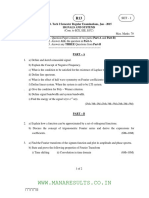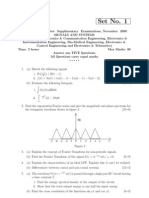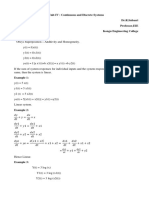0% found this document useful (0 votes)
15 views2 pagesAssignment Signals and Systems Unit 3
This document is a tutorial for a Signal and Systems course at Madan Mohan Malaviya University of Technology, focusing on Laplace and z-transforms. It includes various problems related to finding transforms, proving properties, and analyzing continuous-time and discrete-time LTI systems. The tutorial covers both theoretical derivations and practical applications of the concepts.
Uploaded by
ankitaakki18Copyright
© © All Rights Reserved
We take content rights seriously. If you suspect this is your content, claim it here.
Available Formats
Download as PDF, TXT or read online on Scribd
0% found this document useful (0 votes)
15 views2 pagesAssignment Signals and Systems Unit 3
This document is a tutorial for a Signal and Systems course at Madan Mohan Malaviya University of Technology, focusing on Laplace and z-transforms. It includes various problems related to finding transforms, proving properties, and analyzing continuous-time and discrete-time LTI systems. The tutorial covers both theoretical derivations and practical applications of the concepts.
Uploaded by
ankitaakki18Copyright
© © All Rights Reserved
We take content rights seriously. If you suspect this is your content, claim it here.
Available Formats
Download as PDF, TXT or read online on Scribd
/ 2


























